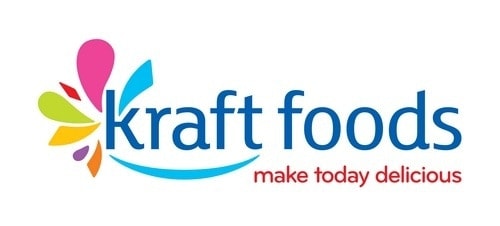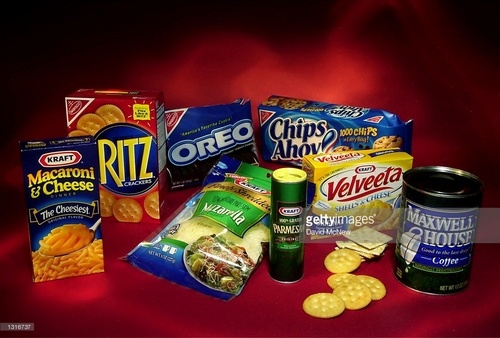The Marketing mix of Kraft Food analyses the 4Ps of Kraft Food, including the Product, Price, Place, and Promotion of Kraft Food. Kraft Food is an American company associated with the global food and beverage industry. It deals in the processing and manufacturing of food items. 2012, a restructuring occurred, and Kraft Foods Inc. was given the new name Mondelez International.
Kraft Food is now focused on dealing with grocery products for the market in North America, and Mondelez focused its energy on the international snack and confectionary brands business. Earlier, it was a public company, but later, in 2015, it merged with Heinz and became known as Kraft-Heinz Company. Some of its competitors are as follows-
- Amul
- General Mills
- PepsiCo
- Nestle Ltd
- Hershey’s
- Mars
About Kraft Food
- Type: Food manufacturing company
- Industry: Consumer packaged goods
- Founded: 1903
- Founder: James L. Kraft
- Headquarters: United States
- Area served: Worldwide
- Key people: Alex Behring (Chairman) and Miguel Patricio (CEO)
- Number of employees: Over 26,000
Table of Contents
Kraft Food Product Strategy

Kraft Food deals in packaged beverages and food items for consumer usage.
The product mix of Kraft Food in 2023 is as follows (Source)
- Dairy Products: Cheese: Kraft is well-known for its cheese products, including Kraft Singles, Velveeta, and Philadelphia Cream Cheese. Dairy Spreads: This includes various flavors and types of cream cheese and cheese spreads.
- Convenience Foods: Macaroni and Cheese: The iconic Kraft Macaroni & Cheese is a staple in this category. Packaged Dinners and Meal Kits: Ready-to-make meal solutions and dinner kits for quick and easy preparation.
- Beverages: Coffee: Brands like Maxwell House and Gevalia fall under Kraft’s umbrella. Powdered Beverages: Kool-Aid, Crystal Light, and Country Time are popular powdered drink mixes.
- Snacks: Biscuits and Cookies: Brands like Oreo and Chips Ahoy! (under the Nabisco brand, which is part of Kraft). Crackers: Including Ritz, Triscuit, and Wheat Thins. Nuts: Planters, nuts, and snacks.
- Sauces and Condiments: Ketchup, Mustard, and Mayonnaise: Various condiments under the Kraft label. Salad Dressings: Including a wide range of Kraft Salad Dressings.
- Frozen and Chilled Foods: Frozen Pizzas: Brands like DiGiorno and California Pizza Kitchen (frozen line). Chilled Desserts such as Jell-O gelatin and pudding.
- Health and Wellness: Reduced Calorie Options: Light versions of their popular products, like low-fat cheese and light dressings. Gluten-Free and Organic Options: Catering to specific dietary needs and preferences.
- International Foods: A range of products tailored to international markets, reflecting local tastes and preferences.
Kraft Food Place Strategy
Kraft Food is an American origin, food and beverage company that has spread its presence in most parts of the United States. Its headquarters is in Northfield, Illinois, and its European headquarters are in Glattpark, Switzerland. Its international presence has spread to nearly one hundred and seventy countries like the United Kingdom, Germany, Australia, India, Bangladesh, and Canada. Kraft Food has manufacturing plants in more than seventy countries around the world and has become one of the largest food companies in the world.
It has a robust and widespread distribution network that includes services of distributors, retailers, manufacturers, and lastly, consumers via convenience stores, discount stores, corner shops, supermarkets, hypermarkets, malls, and food bazaars. All its brands have a personalized distribution network that helps distribute products to its customers easily and conveniently.
Kraft Food Place’s Strategy is as follows:
- Global Distribution Network: Kraft Foods utilizes a vast global distribution network, making its products available in numerous countries worldwide and catering to diverse markets and consumer preferences.
- Retail Partnerships: They have strong partnerships with many retailers, ranging from supermarket chains to local grocery stores, ensuring their products are easily accessible to consumers.
- Online Presence: Recognizing the importance of digital commerce, Kraft has strengthened its online presence, allowing consumers to purchase their products through various e-commerce platforms and online grocery delivery services.
- Strategic Location of Manufacturing Facilities: Kraft strategically places its manufacturing facilities close to key markets to reduce transportation costs and ensure product freshness, especially for perishable items like dairy products.
- Direct-to-Consumer Channels: In recent years, Kraft has developed direct-to-consumer channels, such as branded websites and subscription services, offering personalized experiences and exclusive products to engage directly with consumers.
Kraft Food Pricing Strategy
At the end of the financial year 2011, Kraft Foods showed its estimated revenues at 54.365 billion dollars and profits at 3.547 billion dollars. The company has consciously decided to lower the structure without affecting a product’s or portfolio’s quality. It has adopted a reasonable pricing policy for most of its brands and their products because it caters to the consumer market, which is price-conscious. Kraft Food has to keep its product prices at a similar range as its rival brands to gain a competitive advantage. Its affordable and pocket-friendly prices result in greater sales figures and revenues.
Kraft Foods employs a dynamic pricing strategy, skillfully balancing consumer value with profitability. Several key elements characterize this approach:
- Competitive Pricing: Kraft ensures its products are competitively priced to other players in the market. This strategy helps beverage companies maintain a solid market position, particularly in highly competitive categories like dairy and snacks.
- Price Skimming for Innovations: Kraft often adopts a price skimming strategy for new and innovative products, setting higher initial prices to recover R&D costs quickly. This approach capitalizes on early adopters and establishes a perception of premium quality.
- Psychological Pricing: Kraft effectively attracts cost-conscious consumers using psychological pricing tactics, such as charm pricing (e.g., $1.99 instead of $2.00). This technique is particularly evident in their consumer-facing marketing and promotional activities.
- Promotional Pricing: Regular promotions, discounts, sales promotions, and loyalty programs are integral to Kraft’s pricing strategy. These initiatives boost short-term sales, encourage bulk purchases, and enhance customer loyalty.
- Price Discrimination: Kraft strategically varies prices across different markets and channels based on consumer purchasing power, market conditions, and competitive dynamics. This approach maximizes revenue by catering to the specific economic conditions of each market.
- Value-based Pricing for Specialty Products: Kraft employs value-based pricing for specialty and health-conscious products, such as organic or gluten-free items. This reflects the higher perceived value among the target market of consumers willing to pay a premium for these specialized products.
Kraft’s pricing strategy reflects a nuanced understanding of its diverse consumer base, demands, and highly competitive market landscape. This multifaceted approach enables Kraft to penetrate various market segments effectively while sustaining profitability and brand value.
Kraft Food Promotion Strategy
Kraft Food has adopted intensive promotional plans for its brands and products. Even during the starting years, it distributed circulars to advertise its products. It later started national advertising via radio, newspapers, leaflets, and public relations. It uses every possible means to market its products successfully via popular channels on television, magazines, and billboards in popular places.
It has also advertised heavily on social media platforms via Twitter, Facebook, Blogs, and shopping portals. Kraft Food has associated itself with several sports and events to create positive brand awareness amongst its consumers. It sponsors the National Hockey League, Kraft Fight Hunger Bowl, and Major Soccer League.
Kraft Foods’ promotion strategy encompasses a multifaceted approach:
- Integrated Marketing Campaigns: They utilize traditional advertising (like TV and print ads), digital marketing (including social media and email marketing), and in-store promotions to reach a broad target audience.
- Strategic Partnerships and Sponsorships: Kraft engages in partnerships and sponsorships with various events, celebrities, and other brands to increase brand visibility and appeal to specific target demographics.
- Customer Engagement and Loyalty Programs: Kraft focuses on building long-term customer relationships through loyalty programs, personalized offers, and engaging content, fostering a solid and loyal customer base.
Some Recent Video ads and Print ads of Kraft Food are:
Kraft Mayo TV Spot, ‘Real Mayo. Food Deserve Delicious’ – iSpot.tv
Liked this post? Check out the complete series on Marketing Mix

Thanks. This was really helpful.